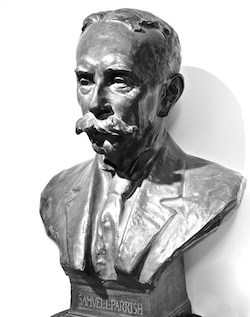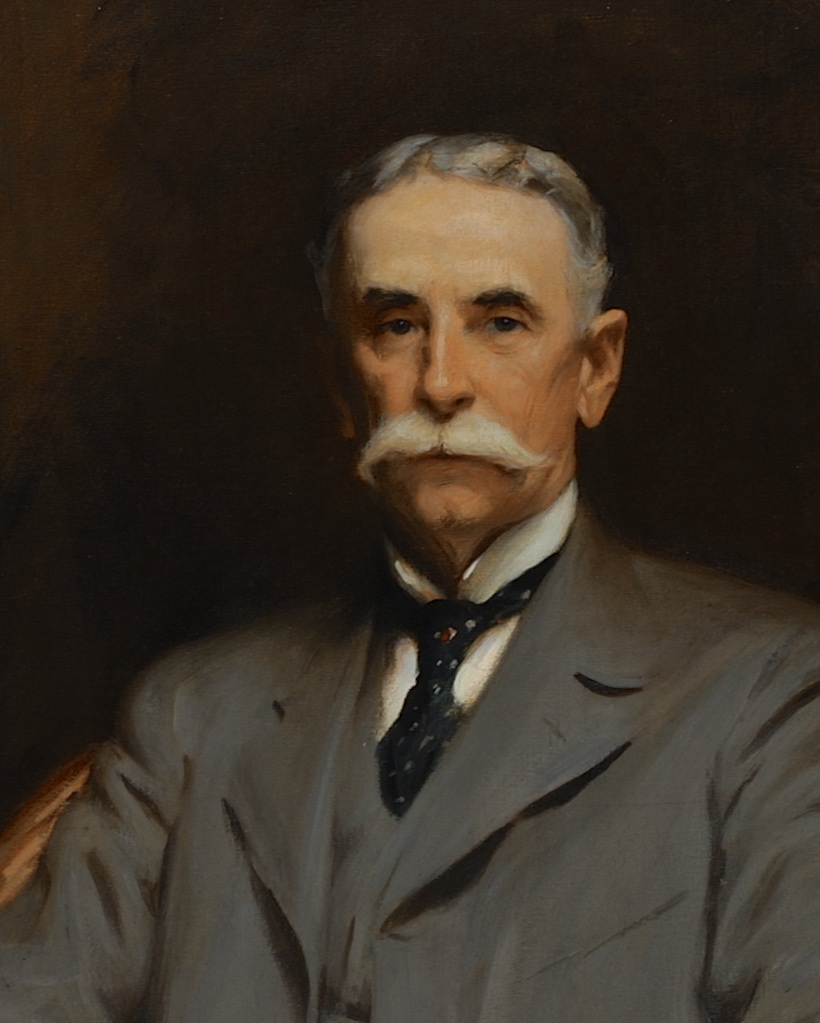 Samuel Longstreth Parrish, 1849 – 1932
Samuel Longstreth Parrish, 1849 – 1932
~~~~~~~~~~~~~~~~~~~~~~~~~~~~~~~~~~~~~~~~~~~~~~~~~~~~~~~~~~~~
SAMUEL LONGSTRETH PARRISH’S 10 LEGACIES
~~~~~~~~~~~~~~~~~~~~~~~~~~~~~~~~~~~~~~~~~~~~
——————————————–
Parrish Legacy # 1 — “White Fence,” Stanford White, Architect

1889: Parrish’s friend, Stanford White, designs “White Fence” for Samuel’s mother on First Neck Lane in Southampton.
For us, her children, was given the inestimable blessing of our mother’s long life and example and loving care which surrounded each one of us for the forty-three years that she was spared to us after our father’s death.
~“Early Reminiscences Associated with the Life and Family of My Mother Sarah Redwood Parrish” by Samuel Longstreth Parrish
~~~~~~~~~~~~~~~~~~~~~~~~~~~~~~~~~~~~
——————————————–
Parrish Legacy # 2 — Southampton Art Village

1891: Parrish brings William Merritt Chase to Southampton to teach and is behind the creation of the Art Village housing for students. The paintings on this wall are reportedly by students of the William Merritt Chase Art School.
~~~~~~~~~~~~~~~~~~~~~~~~~~~~~~~~~~~~
——————————————–
Parrish Legacy # 3 — One of the Original Founders of Shinnecock Hills Golf Course
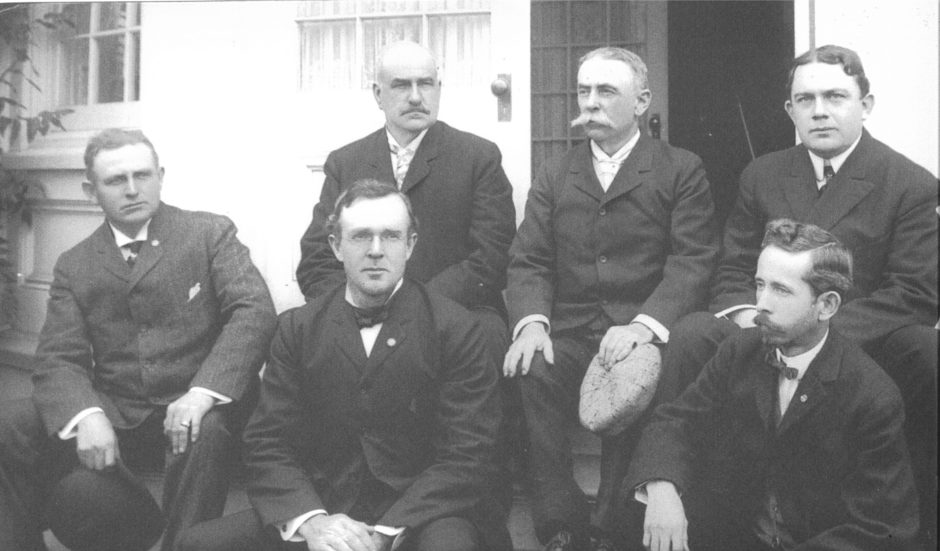
1891: Parrish (top row, middle) along with fellow Southampton patrons founded the Shinnecock Hills Golf Club.
Mr. Parrish was a pioneer golfer in America, a participant in the first inter-club match ever held in this country, and was a founder and first secretary (later becoming President) of the Shinnecock Hills Golf Club, the first to be incorporated on this side of the Atlantic.
~ National Cyclopedia of American Biography, 1927
~~~~~~~~~~~~~~~~~~~~~~~~~~~~~~~~~~~~
——————————————–
Parrish Legacy # 4 — Backs Creation of Southampton Memorial Library & Creates Trust to Fund It
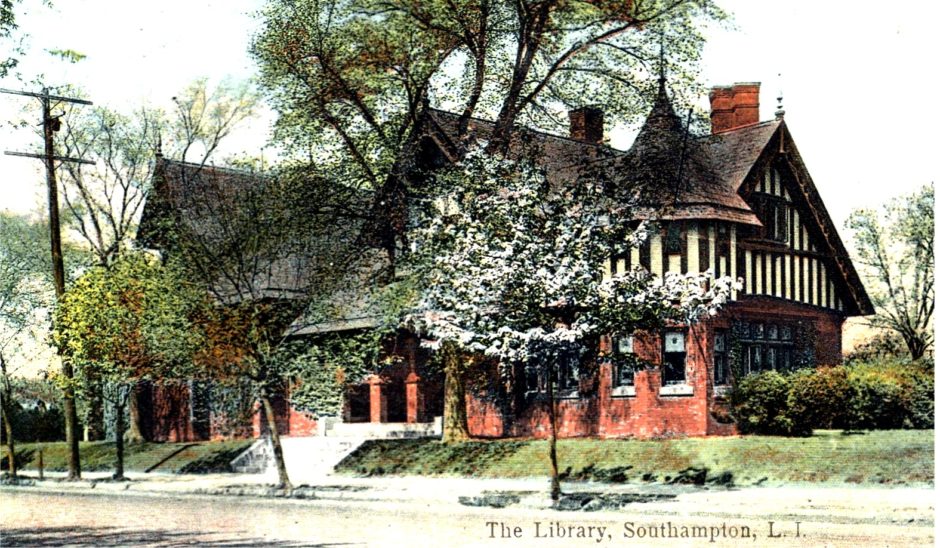
1895: Parrish backs the creation of the Rogers Memorial Library and creates a trust to help fund it.
Southampton, L.I.—James C. Parrish, Samuel L. Parrish and Miss Parrish, sons and daughter of the late Sarah Redwood Parrish, who recently died in this village, have given to the trustees of the Rogers Memorial Library the sum of $5,000 in memory of their mother, the principal to be kept as a trust fund and the interest to be used for the general purposes of the library.
~ Brooklyn Eagle, 30 Sept. 1895
~~~~~~~~~~~~~~~~~~~~~~~~~~~~~~~~~~~~
——————————————–
Parrish Legacy # 5 — Commissions Grosvenor Atterbury to Design Parrish Art Museum
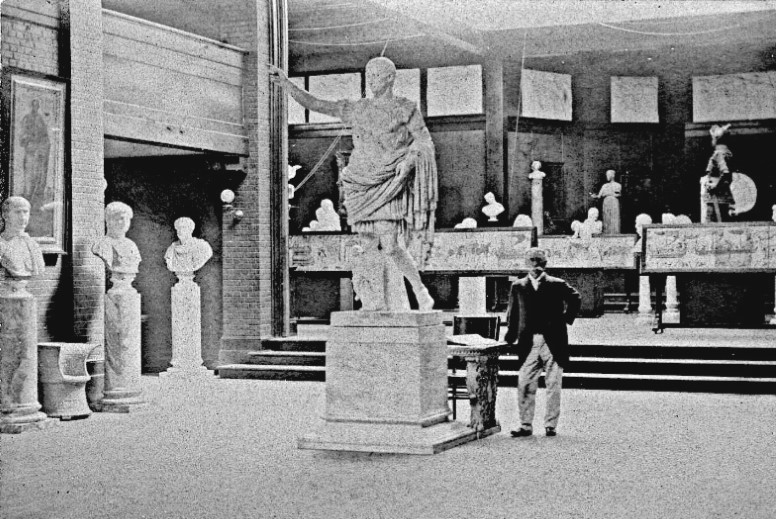
1897: Parrish commissioned Grosvenor Atterbury to design an art museum for the village and filled it with his collection of classical European reproductions of plaster sculptures. He surrounded it with a park-like arboretum.
Southampton, L.I., March 1, 1897—Several lots north of Rogers Memorial Library and west of Southampton bank have been purchased for the purpose of erecting an art annex to the library. It is proposed to erect a building for the purpose of placing on view reproductions in plaster of the masterpieces of the Greek and early Italian sculptors.
~ Brooklyn Eagle
~~~~~~~~~~~~~~~~~~~~~~~~~~~~~~~~~~~~
——————————————–
Parrish Legacy # 6 — Funds First Macadam Road in Southampton Village

1901: Parrish funds Southampton’s first macadam road.
Queen Victoria died; Gymnasium opened by S.L. Parrish; Life saving station moved to Old Town: Town meeting abolished; First macadam road built in Southampton through the efforts of Mr. S.L. Parrish; Adjoining property owners spent $2,500 on Dune Road
~“Historic Events Especially Interesting to Our Citizens” – Entry for 1901 in Southampton Village Handbook of 1908
~~~~~~~~~~~~~~~~~~~~~~~~~~~~~~~~~~~~
——————————————–
Parrish Legacy # 7 — Equips Gym for Residents

1901: Parrish equips gymnasium in former church building for village residents.
Through the generosity of Samuel L. Parrish, for many years a summer cottager at Southampton and now president of that village, the people there will soon have a fine public gymnasium. The building which is being remodeled for the purpose was once the old meeting house of the Presbyterians and was erected in 1707.
~ Brooklyn Eagle, 4 May 1901
~~~~~~~~~~~~~~~~~~~~~~~~~~~~~~~~~~~~
——————————————–
Parrish Legacy # 8 — Donates Land for Southampton Hospital

1911– Parrish donates land for Southampton Hospital.
At a gathering held at Samuel Parrish’s Main Street home following the regular meeting of village trustees, the following announcement was made: ‘the matter of acquiring a suitable site for the hospital, which has been a perplexing one for the Board of Governors, was happily settled by a very generous offer made by Mr. Parrish, who proposes to give the hospital about two and one half acres of land on Old Town road…
~ Southampton Press, October 11, 1911
~~~~~~~~~~~~~~~~~~~~~~~~~~~~~~~~~~~~
——————————————–
Parrish Legacy # 9 — Parrish Memorial Hall in Tribute to Southampton Men Lost in World War
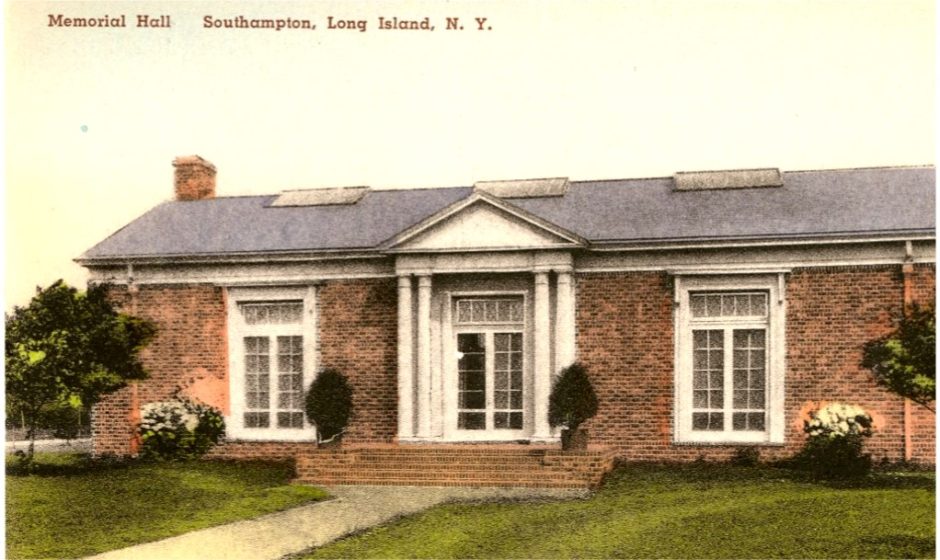
1923 —Parrish erects Parrish Memorial Hall as a tribute to Southampton men who perished in World War I.
After World War I, Mr. Parrish built the Parrish Memorial Hall as a memorial to the six men who were lost in that war. Mr. Parrish had acquired all the land from Old Town Road west to Little Plains Road and bordered on the north by Meeting House Lane.
~ Profile of Parrish written by William K. Dunwell
~~~~~~~~~~~~~~~~~~~~~~~~~~~~~~~~~~~~
——————————————–
Parrish Legacy # 10 — Stores, Main Street, Southampton — Designed by Grosvenor Atterbury

1927: Parrish commissions Grosvenor Atterbury to build stores on Main Street after moving his house back from the road.
He conceived the idea of erecting a row of stores built on the east side of Main Street with the thought that the income would be sufficient to carry on the museum work. At that time our present Historical Museum stood on the corner of Main Street and Meeting House Lane. He moved the building back to its present location…
~ Profile of Parrish written by William K. Dunwell
~~~~~~~~~~~~~~~~~~~~~~~~~~~~~~~~~~~~
Researched & prepared for the Samuel L. Parrish Exhibit at the Rogers Mansion, 2016,
by Emma Ballou, Curator & Registrar at the Southampton Historical Museum.
~~~~~~~~~~~~~~~~~~~
 Rogers Mansion
Rogers Mansion
———————————————–
Samuel Longstreth Parrish
Lived in the Rogers Mansion From 1899 – 1932
Samuel Longstreth Parrish was born in 1849 into a family of prominent Philadelphia Quakers, the youngest of seven children. After the death of his father when Samuel was just three, the family went to live on his uncle’s New Jersey farm where Samuel developed a taste for country life that would eventually bring him to Southampton. After earning a degree from Harvard and studying law, Parrish opened a law practice in New York in 1877.
Though he did not retire until 1897, Parrish became enamored of Southampton in the 1880s when he began acquiring real estate and taking a role in civic affairs. By that time, Southampton was established as a fashionable summer resort and Parrish was far from the only New Yorker spending summers in the village, which had become easily accessible after the arrival of the railroad in 1870. In 1889, Samuel asked Stanford White to design a house for his mother on First Neck Lane. And when, in 1897, he conceived the idea for an art museum, he chose architectGrosvenor Atterbury, a member of Southampton summer society, to design the building on Jobs Lane which he filled with original art works and reproductions acquired in Europe.
In 1899, Parrish purchased the Rogers Mansion from the Nugent family and immediately began to make improvements and additions. He enlarged the mansion’s South Parlor and created a music room, a billiard room, a butler’s pantry, and a servant’s wing. By 1926, he decided to move the house back from its Main Street location and add a pergola and lush gardens, at this point he had nearly doubled the size of the mansion. He again hired Atterbury to design commercial buildings for the vacated property fronting on Main Street. The handsome brick buildings survive, along with so many other reminders of his generosity toward his adopted village. In addition to the museum that bears his name, theShinnecock Golf Club owes its existence to him and a small group of his friends who brought golf to Southampton; the Parrish Memorial Hall was a gift from him and his brother James; the Rogers Memorial Library and Southampton Hospital were both established with his help; and he played a pivotal role in establishing the nations’ first outdoor art school in Shinnecock Hills. (See images at end of album.)
Civic-minded, as befitted a man of his times, social station and Quaker upbringing, Parrish was active in Republican politics and served a term as Southampton’s president (mayor). Parrish loved to entertain and during his residency, the Rogers Mansion was a vibrant center of activity, whether he was hosting a lively political discussion in the south parlor, an elegant dinner in the dining room or a summer repast under the pergola. — Southampton Historical Museum.
www.southamptonhistoricalmuseum.org
_________________________________________________________

